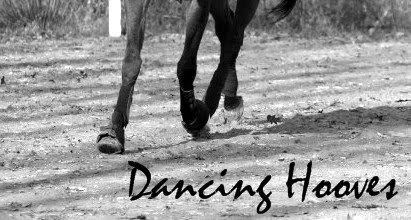Just wanted to let everyone know that
JOHNNY CANTERED ON HIS RIGHT LEAD TODAY!!!!
Both on the longe line and undersaddle!!! I almost peed myself I was so excited!!!
I'm going to continue to longe him to help get him used to cantering on it and strengthen the muscles also.
WOOOOO HOOOO!!!!
Subscribe to:
Post Comments (Atom)
















YAY! That is great! Here are my thoughts on cantering your STB.....that I said I would send you.
ReplyDeleteRemember cantering is not a physical hurdle, it is a mental one. Most STBs can canter easily, but need to be strengthened, especially in their stifles. I have a great article around here somewhere, but basically lots of hills for stifle strengthening.
I think lateral work is one of the most important pieces of training a Standardbred. Start from the ground, placing your hand where the leg would be, and teach the horse to move away from pressure. You can do turn on the forehand and haunches on the ground and easily transfer them to under saddle. Also learn and develop a leg yield and a shoulder fore.
Develop a half halt. There is much mystery surrounding just exactly what a “half halt” is. Basically it is just what it sounds like: you ask for an “almost” halt. Using your legs and rein aids, you ask the horse to rebalance. Half halts are used before a transition and during any gait. You actually need to teach your horse what a half halt is. Most of the literature makes it sound like your horse will just “do it” if you ask. You need to start by actually making the downward transition (from whatever gait) and then gradually use the half halt to rebalance instead of the transition. (see below under canter for more on this) As Robert Dover said, “Most riders ride from movement to movement. Effective riders ride half halt to half halt.” Makes sense if you think about it.
Cantering:
1. Do a couple leg yields at the walk, either on a long side or on a circle, then ask for a trot, get a nice easy trot for a few strides on a circle, and then ask for the canter. Getting her to step underneath her body before the transition improves everything. Also I will do one to two strides of leg yield in a test right before the canter. They are tiny, usually on a circle or corner, and more of an aid to come underneath herself with that hind leg, rather than a full leg yield.
2. Time your canter aid when her outside hind is coming forward, as that is the first step of a canter stride.
3. When Dreamy decides she does not want to pick up the correct lead (happened A LOT last summer to the left), I would counter bend her before I asked for the transition. This helped immensely! Counter bending is something I use a lot.
4. Once she understood the canter transition from the trot, my instructor had me asking for the canter from the walk. This really helped her to step up into the canter, rather than lunge or fling herself into it.
5. I have found that a few good strides of canter are more beneficial than just cantering around and around and around. Since I want to improve the quality of her canter, I come back to the trot/walk when the quality deteriorates. Ideally, you can go from 2-3 good strides and build up to 5-6, then a full circle, then the ring, etc. etc.
6. I often use the trot transition to “half halt” during the canter. Because Dreamy needed to figure out her balance at the canter, and did not yet know what a half halt is, I could not half halt in the canter to rebalance her. I would ask her to trot, rebalance her that way (plus trotting is something she CAN do) and then ask for the canter again. This leads me to…
7. I have also found that transitions, transitions, and MORE transitions help a ton. I literally will do 2-3 trot-canter-trot transitions on a 20 m. circle. It teaches her to sit back and ready her body for the upwards transition, because she is expecting it. I also have done a trot figure eight, then asked for the canter each time I crossed X. Then I would canter half a circle, come back to the trot, and then ask again at X for the other lead. Granted, anticipation is not usually a good thing, but I found for a canter transition it was. (Dreamy doesn't get nutty about it or try to rush, so that is also why it worked. If your horse gets too riled up, encouraging anticipation may not work.)
Thank you! I used to event when I was younger, so the lateral work and half haults are very familair to me. Lots of what you mentioned is what I have been doing :) Especially the counter bend to get John's bad lead. It's completely necessary or else he won't pick it up at all. Thanks again!!
ReplyDelete